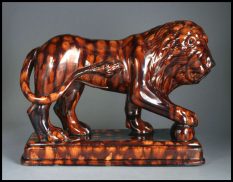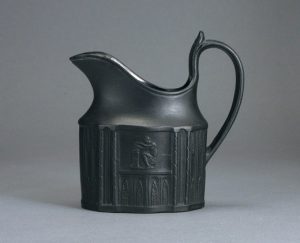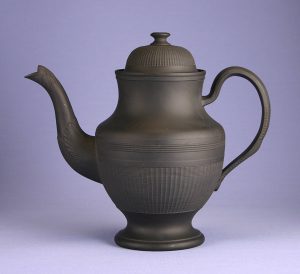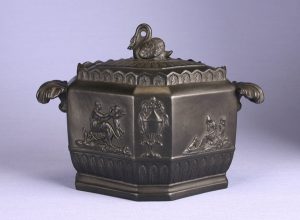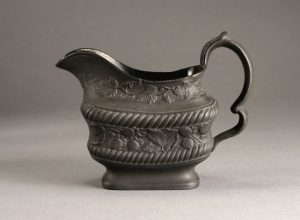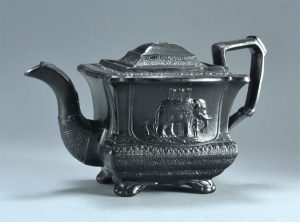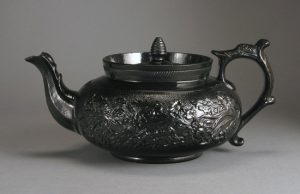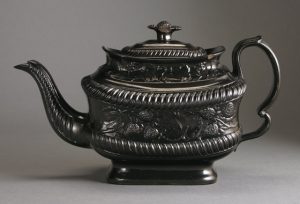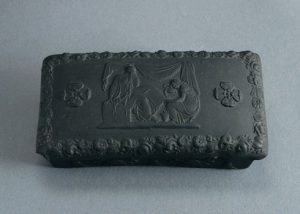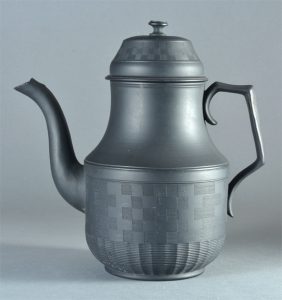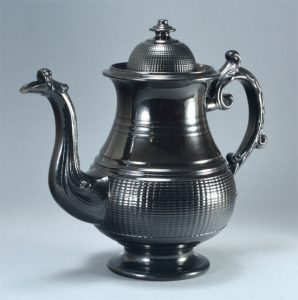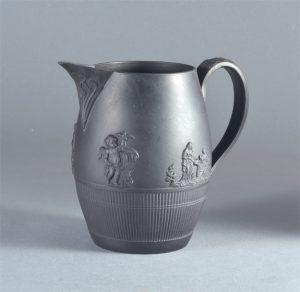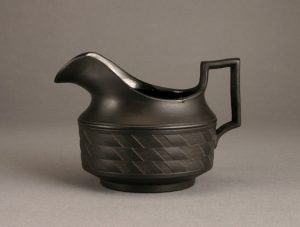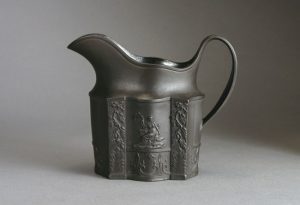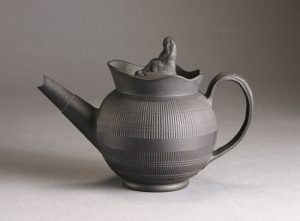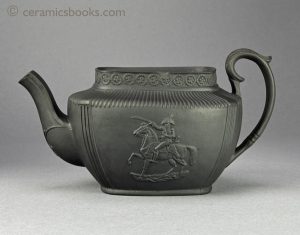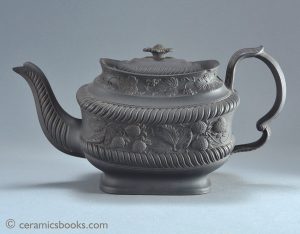Black Basalt
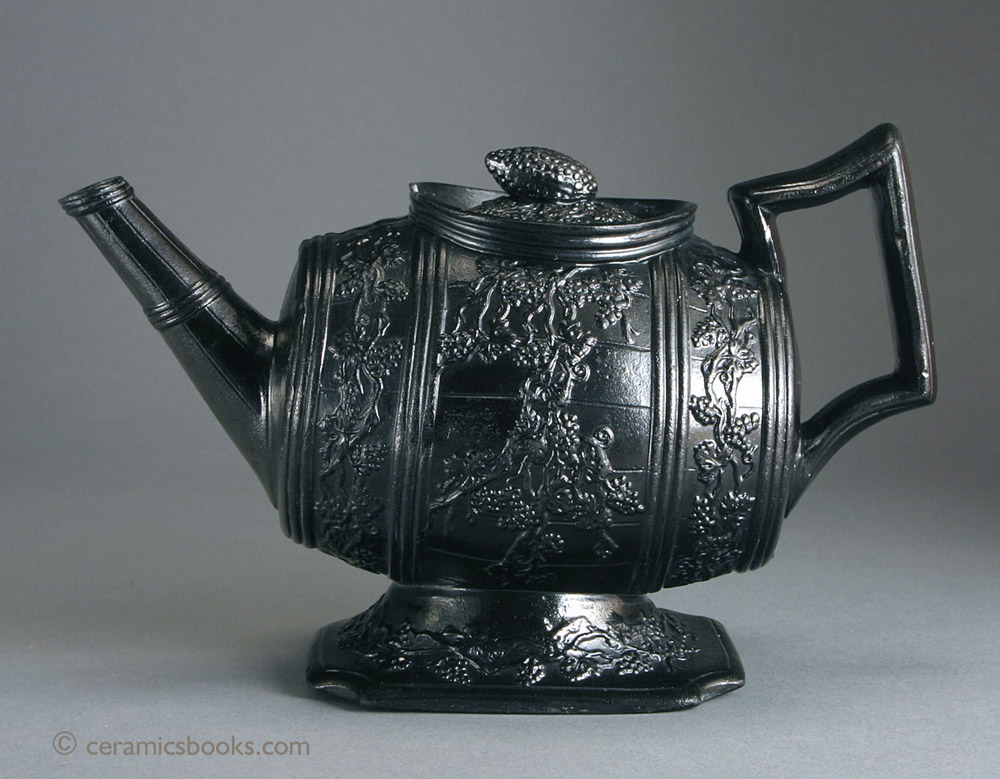
Black basalt, also known as Egyptian Black, is a black-
Black basalt continued to be produced throughout the C19th in many British potting centres. Black basalt is often confused with ‘Jackfield’ type wares, which differ in that they have an opaque black glaze over a red or black body and are earthenware. Black basalt on the other hand, is unglazed or clear glazed over a black body and is fired to low stoneware temperatures. The high level of colouring oxides mixed with the clay body, act as fluxes which would cause the clay to melt if fired at higher stoneware temperatures.
